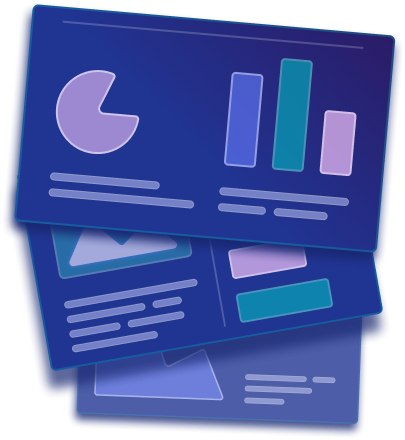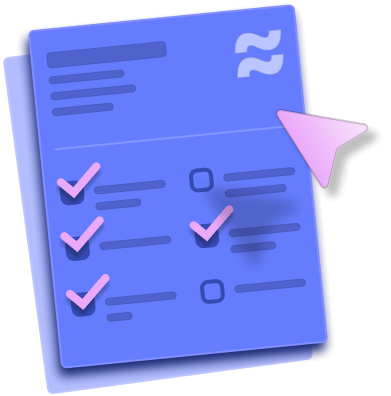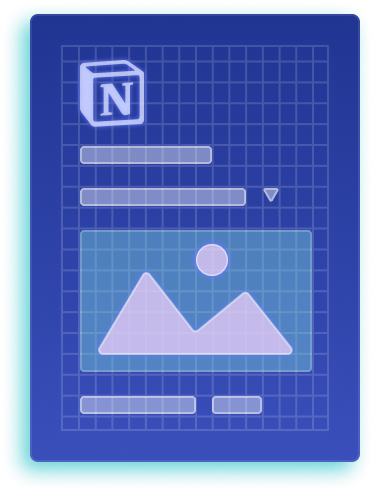Webflow ChatGPT Integration
ChatGPT took over the world by storm. It's possible to use automation tools and integrate it with your Webflow website.

.svg)

.svg)


.svg)
About ChatGPT
ChatGPT took over by world by storm and is now one of the most popular AI products out there. It’s no secret that many are now wondering whether it’s possible to integrate ChatGPTs capabilities in their Webflow sites. We asked ChatGPT to introduce itself to us, so here it is:
“I am ChatGPT, and I was built by OpenAI as an AI language model. My purpose is to assist you by generating text based on the input you provide, which imitates human language. I've been trained on a vast amount of text from the internet, which allows me to understand and generate text in natural language. I can engage in text-based conversations, answer questions, and even provide explanations, and generate creative content. I can also assist with a wide range of natural language processing tasks.”
Why Connect Webflow and ChatGPT
Here are some of the benefits and use cases of connecting ChatGPT with Webflow.
- Enhanced user experience — By integrating ChatGPT into your Webflow website, you can provide visitors with a more interactive and engaging experience. Users can ask questions, get instant responses, and find information quickly, and more.
- 24/7 availability — ChatGPT operates 24/7, so users can access information and assistance at any time, even outside of their regular business hours.
- Efficient customer support — You can use ChatGPT to automate common customer support inquiries, such as answering FAQs or providing basic product information.
- Personalization — ChatGPT can use user data to personalize responses and recommendations. For example, it can suggest products or content based on a user's previous interactions or preferences.
- Scalability — ChatGPT can handle a large number of simultaneous interactions, making it scalable for businesses with varying levels of website traffic.
- Cost savings — By automating repetitive tasks and inquiries, you may reduce the need for a large customer support team, leading to potential cost savings.
- Data insights — You can collect valuable data on user interactions with ChatGPT, which can help you understand user behavior, preferences, and pain points. This data can inform your marketing and product development efforts.
- Multilingual support — ChatGPT can be used to provide support in multiple languages, expanding your reach to a global audience without the need for a large multilingual support team.
- Integration with existing systems — Depending on your needs, you can integrate ChatGPT with other systems and databases to provide users with real-time information or perform specific actions, such as booking appointments or making purchases.
{{cta}}
Common Challenges When Integrating ChatGPT and Webflow
Here are some things to take into account if you’re considering the ChatGPT Webflow integration.
- API integration — ChatGPT typically requires an API call to interact with it. You need to understand how to make API requests from your Webflow website. API rate limits and authentication (API keys) are also factors to consider.
- Data privacy and security — Handling user data in a chat interface raises privacy concerns. You must ensure that you're handling user data securely and complying with data protection regulations, like GDPR or CCPA.
- Natural language understanding — ChatGPT's understanding of natural language can sometimes be imperfect. You might face challenges related to accurately interpreting user queries, especially if they are vague or complex.
- Context management — Maintaining context in a conversation can be challenging. ChatGPT may not always remember the previous parts of the conversation, which can result in disjointed interactions.
- Content moderation — To prevent the generation of inappropriate or harmful content, you should implement content moderation mechanisms to filter or flag responses generated by ChatGPT.
- Training data bias — ChatGPT may generate biased or inappropriate responses. You may need to address bias issues through fine-tuning or post-processing.
- Customization — Achieving a chatbot that aligns with your brand and provides the desired user experience often requires customization.
- Handling errors gracefully — ChatGPT is not infallible and can generate incorrect or nonsensical responses. You'll need to design your integration to gracefully handle errors or situations where ChatGPT cannot provide a useful response.
- User experience — Designing a user-friendly and intuitive chat interface within Webflow can be challenging.
- Ongoing maintenance and updates — ChatGPT models may receive updates or require periodic retraining. You should have a plan for ongoing maintenance to keep the integration up to date.
- Costs — Consider the cost of using ChatGPT, as some API calls may be subject to pricing. You should monitor usage to prevent unexpected costs.
How to Connect ChatGPT and Webflow
Unfortunately, there are no direct ways to integrate ChatGPT into Webflow, but it's worth noting that both ChatGPT and Webflow offer APIs (Application Programming Interfaces) that developers can use to create custom integrations. If you don’t have technical expertise, it’s best to get in touch with Webflow experts, who’ll help you with this.
There are several approaches to this. Let’s explore one of them, which is creating a simple form with a question and an answer.
Step 1: Open a Webflow and Open AI account
If you’re not already a member of these two services, make sure you register on both.
Step 2: Obtain the API keys from Open AI
Log in to your OpenAI account and navigate to the API Page. Under API Key, click to generate a new key. You will have to name the key and copy & paste it somewhere, as you will need it.
It will be essential for making API calls to OpenAI.
.png)
.png)
Step 3: Set up Make account
Make is an automation tool similar to Zapier, which you need to use to connect ChatGPT to Webflow successfully. You can use Zapier as well, as it will follow a similar format to this, but we will stick to Make to explain how connecting works.
.png)
Step 4: Make the Make connection to your Webflow website
Click on Create a new scenario and start by adding your Webflow website to Make.com, and will provide you with a webhook address. Save this address for later use. In other words, click on the plus sign, find Webflow, and find the Webflow Watch Event as the first step.
.png)
In this process, you will also have to authorize Webflow to connect it to your Make account. Webflow's standard authorization window will pop up, so you will have to select a project you want to authorize.
Since we're going to do a form input to communicate with ChatGPT, you should set Form Submission as the trigger type.
.png)
You will get a webhook address that you need to save for future use.
.png)
Step 5: Create an event in Make and make a connection
Within Make.com, create a new event to connect Webflow with OpenAI. Click on a small + sign to add a new model, and search for Open AI. Then, under actions, select Create a Completion.
.png)
Click on Create a connection, and you'll be prompted to enter your API key that you previously generated with Open AI.
.png)
You'll need to specify the model you want to use. Define a prompt, which is the input you want to feed into OpenAI. It should be the name of the input field on your website (let’s say it’s called “name”)
.png)
In a way, this is where all ChatGPT configuration happens. But, don't worry: you can configure this further later, once your connection with ChatGPT is established.
Options such as Temperature are various configurations to tune your ChatGPT response, so we suggest looking more into these settings if you want to use ChatGPT in your Webflow project.
Step 6: Create CMS fields for responses
In your Webflow CMS, create a collection with fields for "AI answer" and "AI question." These fields will store the responses from OpenAI.
.png)
Next, add these as CMS items on the page. This is where the fields from the collection will be shown.
.png)
Step 7: Create a Webflow form
Add a simple Webflow form to your project, including a single input field. Set the form action to the webhook URL provided by Make.com, and specify the field name (in this example, "Name").
.png)
Step 8: Create an item via Make
Next, make the third step in your Make connection, which is creating an item in Webflow for each prompt made on the site. Click on the + sign once again and add the third module. Select Webflow, and then Create an item.
Choose the "questions" collection and map the AI-generated answer to the "AI answer" field and the question to the "AI question" field. You can also define a slug or ID for each entry. This form comes with several other options that will help you configure the integration better.
.png)
The picture below shows how to fill it properly, so that the AI Answer field returns what ChatGPT gives, while AI Question is your prompt added via the form.
.png)
Step 9: Launch your site with the form
First, run your integration via Make to see if it works. Next, publish your site and you should have an established simple form which will record all questions and answers from the users.
Conclusion
In conclusion, while the integration between Webflow and ChatGPT may seem simple at first glance, delving into more complex automation requires a deep understanding of both tools along with familiarity with advanced automation solutions such as Zapier and Make.
To tackle more challenging automation scenarios, one must not only comprehend the intricacies of Webflow as a website-building platform but also grasp the capabilities and nuances of ChatGPT as an AI language model. This involves understanding how to leverage Webflow's features for designing and developing websites, navigating its interface, and exploring its integrations and APIs. Similarly, a comprehensive understanding of ChatGPT is essential, encompassing its functionalities, limitations, and methods for interaction via its API or integrations.
Webflow Requirements
Simple ChatGPT and Webflow integrations (such as the one described above) don’t require having a paid Webflow pricing plan. However, if you’re going to explore it more and record each answer in the CMS, you’ll have to get an appropriate paid plan.
OpenAI Requiremenets
OpenAI API is actually not free. Make sure to check the pricing structure to see how billing works.
{{cta}}





The 2025 Playbook for Website Customer Acquisition
.png)

.png)

in mind?
Talk with our team and learn how your ideas can become digital experiences.
Your go-to Webflow
resources library
Webflow projects where we made ChatGPT integration
Explore some of our clients where we integrated ChatGPT in their Webflow site.
Check Other Webflow integrations
See Other Relevant Integrations
We get asked these questions often
Can you connect ChatGPT with Webflow?
Yes, that’s possible, but you’ll have to use third-party solutions, such as Zapier or Make.com.
Is it difficult to automate Webflow with ChatGPT?
Yes, it is. ChatGPT and Webflow need to be connected via a third-party automation software, but you need to be a Webflow expert in order to successfully set up web pages to work together with Open AI.
What tools do I need to automate ChatGPT and Webflow?
You will have to use a third-party automation tool, such as Zapier or Make.com.
.svg)

.png)
.png)
.svg)
.svg)
.svg)

.webp)
.svg)





